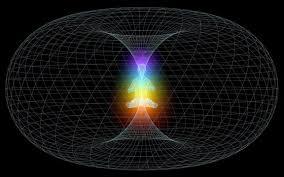Embodied Meditation
Experiencing the Energy of Universe Flowing through You
Schedule your Embodied Meditation Session

What is Meditation?
A brief explanation of meditation practice.
Meditation is a practice that involves focusing the mind to achieve a state of calm and clarity. When we explore the meaning of meditation, we understand it as a method to cultivate mindfulness and awareness. To define meditation more precisely, it is a technique that trains the mind to concentrate and redirect thoughts, often towards the breath, which serves as an anchor.
How do you learn to meditate? In mindfulness meditation, we’re learning how to pay attention to the breath as it goes in and out, and notice when the mind wanders from this task. This practice of returning to the breath builds the muscles of attention and mindfulness.
When we pay attention to our breath, we are learning how to return to, and remain in, the present moment—to anchor ourselves in the here and now on purpose, without judgement.
WHAT IS THE DIFFERENCE BETWEEN MINDFULNESS MEDITATION VS. EMBODIED MEDITIATION?
Understanding Embodiment in Mindfulness
Embodiment refers to the lived experience of inhabiting one’s body with full awareness. It involves recognizing how thoughts, emotions, and sensations manifest physically and how the body is not just a vessel but an integral part of conscious experience. In the context of mindfulness, embodiment shifts attention from purely cognitive acknowledgment to a holistic sensory presence that includes bodily sensations.
Traditional mindfulness meditation encourages nonjudgmental observation of mental phenomena, such as noticing when the mind wanders or acknowledging feelings without attachment. Embodied mindfulness extends this by inviting practitioners to anchor their awareness in bodily sensations — breath, posture, muscle tension, temperature, and movement — fostering a more grounded and integrated state of being called the "Flow State".
Why Embodiment Matters in Mindfulness Meditation
1. Deepens Present-Moment Awareness
When we focus solely on thoughts or emotions during mindfulness practice, it is easy for the mind to become distracted or lost in narratives. Embodiment directs attention to immediate physical sensations that are always present, thus serving as a stable anchor for the wandering mind.
2. Enhances Emotional Regulation
Emotions are experienced through physiological changes—heart rate fluctuations, muscle tightness, or breathing patterns. Tuning into these signals during meditation helps recognize emotional states early and respond with greater ease, rather than reactive patterns.
3. Promotes Integration of Mind and Body
Western culture often separates mind and body as distinct entities. Embodiment challenges this dualism by highlighting their interconnection. This integration supports holistic well-being by encouraging self-awareness that includes physical health alongside mental clarity.
4. Cultivates Compassion and Self-Acceptance
Embodied mindfulness nurtures kindness toward oneself by honoring bodily experiences without judgment. This can help counteract tendencies toward self-criticism or disconnection from one’s own physical needs.
